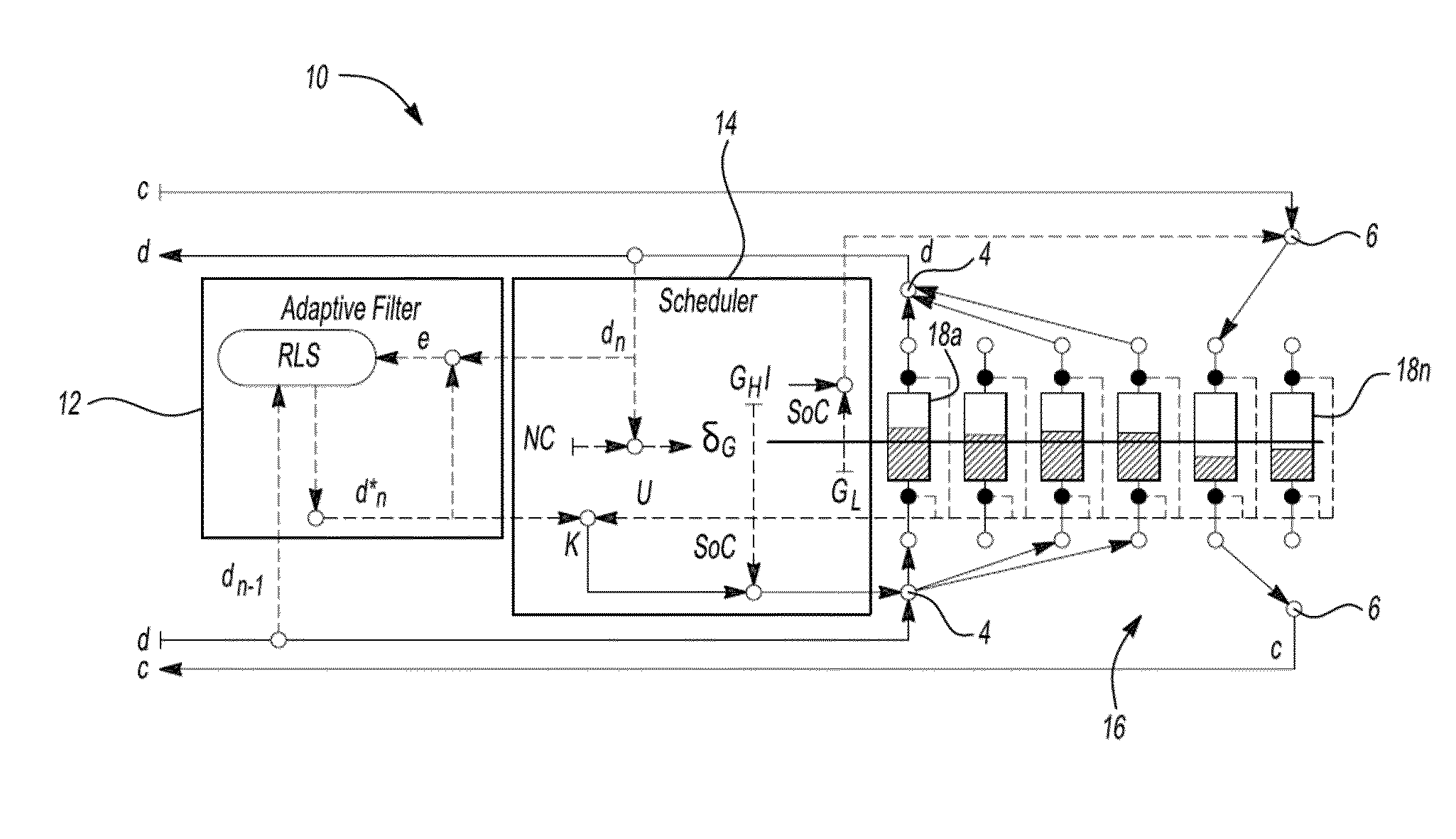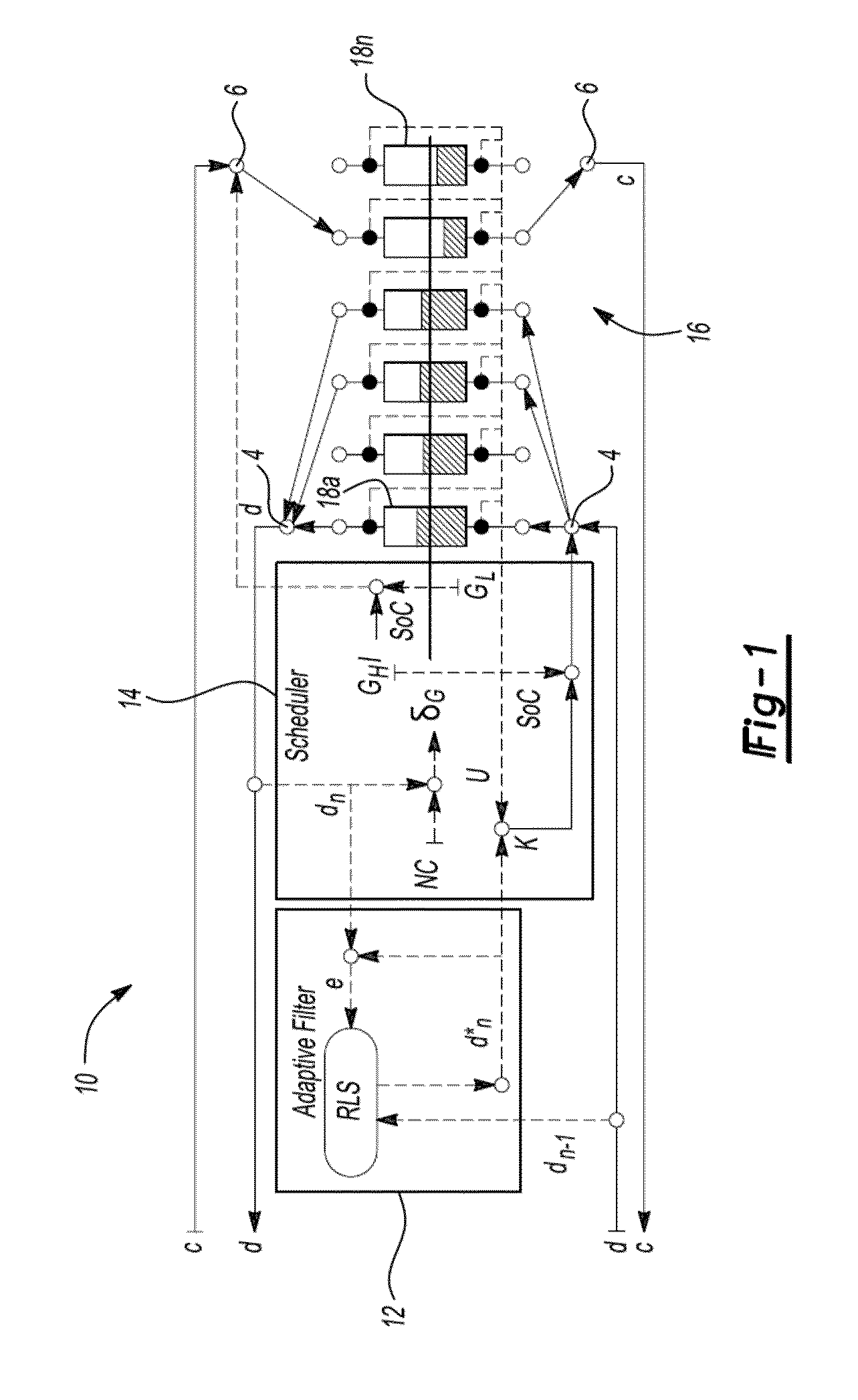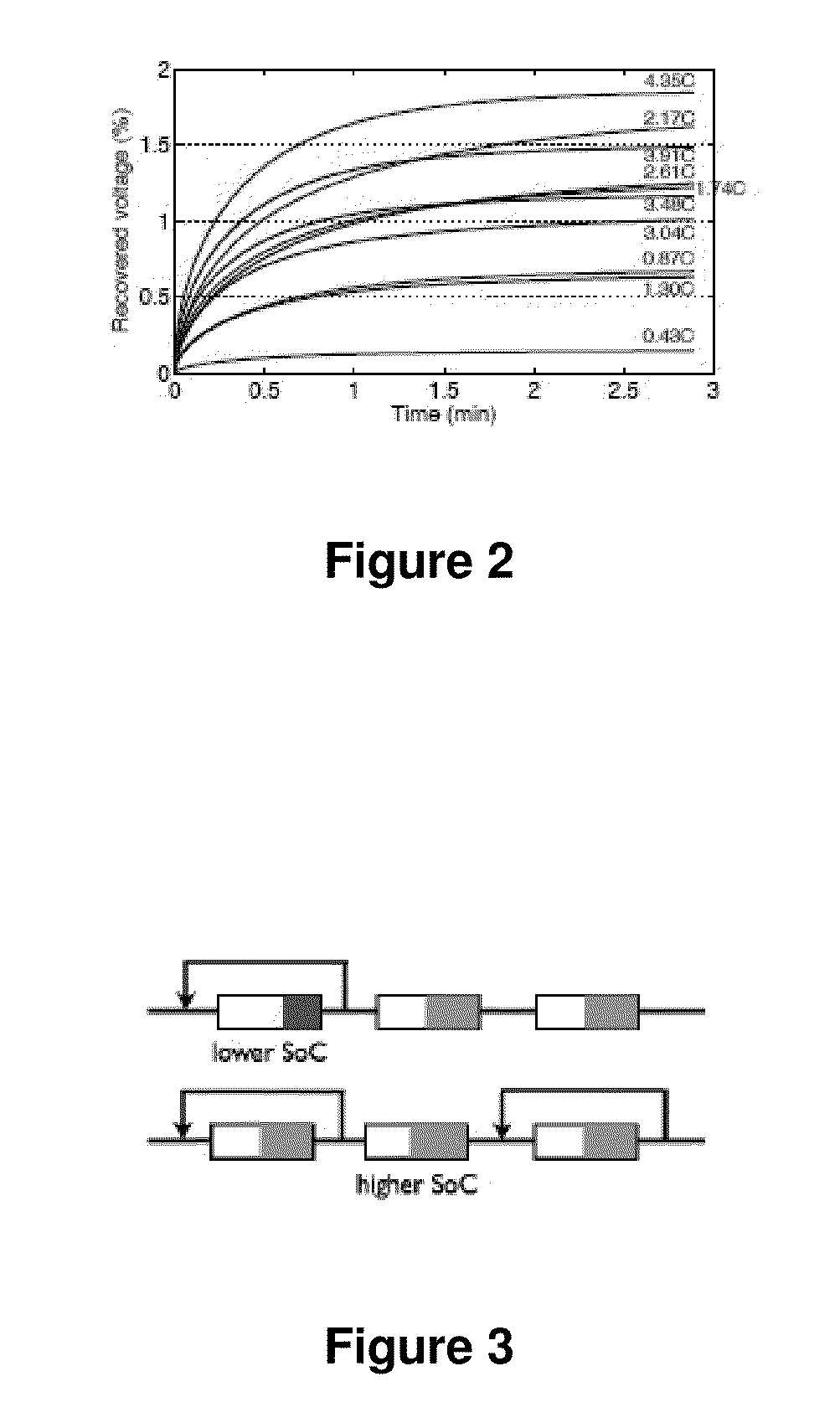System for scheduling battery charge and discharge in a reconfigurable battery
a battery and reconfigurable technology, applied in the field of system for scheduling battery charge and discharge, can solve the problems of significant overhead, not even damaging the cell itself, and explosion, and achieve the effects of increasing workload, excellent performance, and large voltage drop
- Summary
- Abstract
- Description
- Claims
- Application Information
AI Technical Summary
Benefits of technology
Problems solved by technology
Method used
Image
Examples
Embodiment Construction
[0027]FIG. 1 depicts an exemplary battery management system 10. The battery management system 10 is comprised an adaptive filter module 12, a scheduler module 14 and a plurality of battery cells 18a-18n arranged in reconfigurable circuit paths. For purposes of this disclosure, a battery cell can refer to a single battery cell, a series chain of battery cells, a battery module, or a battery pack. The plurality of battery cells 18 are selectively interconnected to charger terminals 4, discharge terminals 6 and / or to each other by a plurality of switches (not shown). An exemplary arrangement for a reconfigurable battery cell circuit is described in U.S. patent application Ser. No. 12 / 757,293 filed on Apr. 9, 2010 and incorporated herein by reference. Other types of reconfigurable circuit arrangements are also within the scope of this disclosure.
[0028]Briefly, the input to the adaptive filter 12 is a history of the loads measured at certain intervals. An estimate of the upcoming load de...
PUM
 Login to View More
Login to View More Abstract
Description
Claims
Application Information
 Login to View More
Login to View More - R&D
- Intellectual Property
- Life Sciences
- Materials
- Tech Scout
- Unparalleled Data Quality
- Higher Quality Content
- 60% Fewer Hallucinations
Browse by: Latest US Patents, China's latest patents, Technical Efficacy Thesaurus, Application Domain, Technology Topic, Popular Technical Reports.
© 2025 PatSnap. All rights reserved.Legal|Privacy policy|Modern Slavery Act Transparency Statement|Sitemap|About US| Contact US: help@patsnap.com



